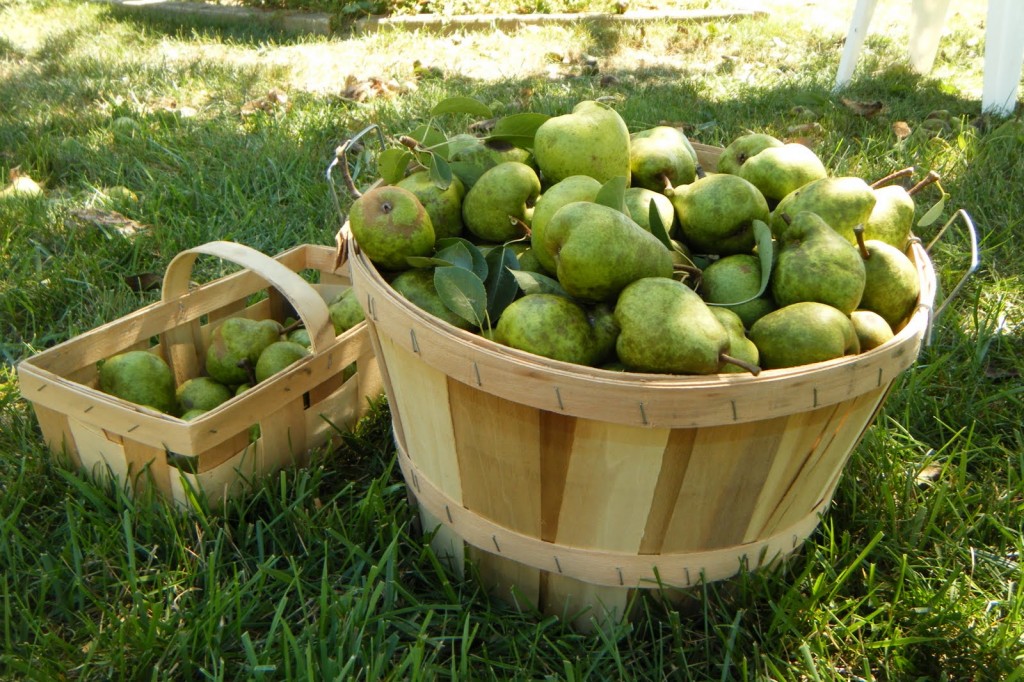We’re visiting Italy today. “The Little Girl Sold with the Pears” is a fairy tale collected by Italo Calvino in Italian Folktales, published in 1954. You’ll notice some familiar themes in the story.
A man had to pay the king four baskets of pears each year, but one year he only had 3½ baskets to send, so he put his little girl in the bottom of the fourth basket and covered her up. She is eventually discovered by the King’s kitchen staff. She is given the name Perina and she goes to work in the kitchen. Of course, she’s beautiful and kind and smart and the prince falls in love with her. The other maids though become jealous and tell the King that Perina has boasted that she can steal the witches’ treasure, and he sends her out to do so.
Perina travels through the woods, spending the night in a pear tree. In the morning, a little old woman is standing under the tree. The woman gives her three gifts to take on her journey: grease, bread, and millet. She goes on, gives the millet to three women in a bakery, throws the bread to some frightening dogs, crosses a river by saying a charm that the little old woman had given her, and greases the hinges of the witches’ house. Then she takes the treasure chest. On the way back to the castle, the chest speaks, but the door refuses to slam on her, the river to drown her, the dogs to eat her, and the women to bake her.
Perina can’t contain her curiosity and opens the chest. Out jumps a hen and her golden chicks who run away. Thankfully, near the pear tree, she finds the old woman again, and the hen and chicks are with her. The old woman shoos the birds back into the chest and the girl heads home. When she arrives, the prince tells her to ask for the coal chest in the cellar as a reward. When it’s brought up, the prince is hidden in it, and the King happily allows them to be married.
First of all, once again the father is not really that good a parent. I like to hope that he realized that the girl would be found and hopefully given a place at the castle, but I’m thinking it’s more likely that she was just an easy solution to his problem. And Perina of course, is perfect like so many girls in fairy tales. She deserves her happy ending because she is so good and pretty and obedient.
Three is a number used a lot in fairy tales. Aside from the Three Little Pigs and the Three Billy Goats Gruff, you have Baba Yaga’s three guardians and the three tasks she gives to Vasilissa, the three nights Cinderella goes to the ball, even Momotaro’s three companions, and I’m sure there are more. It’s a magical number.
And the chicks remind me of the golden eggs. That’s one thing I love about fairy tales, how you can see commonalities across tales and across cultures.
I do find it a little odd that the prince had to hide in the coal chest. The girl brought back the treasure, shouldn’t the prince have just gotten to marry her automatically without the rigamarole of hiding.
The version of “The Little Girl Sold with the Pears” I read is from the 1980 version translated by George Martin. You can find it several places on-line, including here.

Thursday’s Tales is a weekly event here at Carol’s Notebook. Fairy tales, folktales, tall tales, even re-tellings, I love them all.

I liked this one 😀
Aside from the story – love the pear picture!